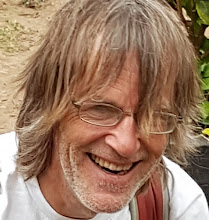Swedish county letters
.JPG) |
| A Mora knife from the 1930s-40s |
In two hours there appeared just eight cars.
Two Volvos, two puttering Saabs, a Borgward Isabella, a Hillman, a Morris Minor with an old guy at the wheel and a green Opel Olympia.
But actually it wasn't the types of car that interested us but the county letters.
It was Bert-Egon and me who were sitting there on the milk table below Uncle Arvid's house. It was Friday evening and as usual we had nothing in particular to do.
We sat and dangled our feet and dug out splinters from the weatherbeaten planks with our Mora knives and looked at the cars that went past.
And there were not many.
The majority were Y reg cars,but two were from AC. One of the Saabs was an A reg. That was a Stockholmer. At that point we jumped down off the milk table and threw stones after it until it disappeared in a cloud of dust in the direction of Nybystrand.
"The next one's a P," said Bert-Egon.
"P?" I said. "Where does a P reg car come from? That must be way down south, eh? Skåne or Småland or Blekinge?"
"Got no idea," answered Bert-Egon. "I've never seen P on a car, but there's always a first time, like the girl said."
We were playing a game. We had to guess which county letter the next car would have. I was 5-3 up, so it was a bit weird that Bert-Egon took such a gamble instead of going for Y.
"A," I said, even though I reckoned it would be a Y.
But we were both wrong. Around the bend behind the bridge came a strange procession, no less than three cars in convoy. Three big American cars that rolled forward on the gravel road.
The first one was a Chevrolet Bel Air, Bert-Egon knew that one, with grillwork like a grinning mouth, a jetplane as hood ornament, and fins.
The second was even bigger, with even longer fins, black and white, but with the same dollar grin.
The third was all black, just as big as the second car but not quite so snazzy, more sober and solemn, as if it was carrying a mourner or a state governor.
But all three seemed run-down and dirty.
We stood up on the milk table, as if in tribute, and gaped with wide eyes.
"The second one's a De Soto and the last one a Chrysler," whispered Bert-Egon, his voice filled with admiration.
"And we both got it wrong," I whispered."X, what is that?"
"I'm not sure," said Bert-Egon. "Gävle, I think. What cars!"
They had already started to turn in towards us. ...
(Opening of Spådomen (The fortune), a 1988 young adult novel by Bo R Holmberg.)
*
The story takes place in the early 1960s in rural Ångermanland in the north of Sweden.
The county letters (länsbokstäver) formed the alphabetical part of Swedish number plates between 1907 and 1973. The idea caught on and the county letters still sometimes show up in other contexts.
The counties in question (läns) are not Sweden's historic provinces -- such as Ångermanland -- but administrative regions; they sometimes nearly coincide with a historic province, but often not. The läns aren't a modern imposition, having existed in some form or other ever since 1634. They've been fairly stable since 1810 though changes still occur.
The ones referred to here:
Y: Västernorrlands län. The local letter in Ångermanland and Medelpad.
AC: Västerbottens län. This would also be a regular sight, because the län border is not far to the north of where the story is set.
A: Stockholm city. Not very near to Ångermanland, but Stockholm being so much more populous than any of the northern counties, an A car would still be a fairly common sight.
P: Not the far south as Lasse surmises, but Älvsborgs län. Incorporated into Västra Götalands län in 1998, it was a region inland from Gothenburg that included e.g. Borås and the historic province of Dalsland.
X: Bert-Egon was right, X meant Gävleborgs län.
Full list here:
https://sv.m.wikipedia.org/wiki/L%C3%A4nsbokstav
 |
| A map of län boundaries and their letters. From a 1973 edition of Vägvisare, a road atlas published by the motoring association Motormännens Riksförbund (now M Sverige). |
Puttering Saabs: the Saab of those days had a two-stroke engine. It was agile, lightweight and could win rallies but hadn't yet become a status car.
Milk table: the table outside a farm where dairy vehicles would collect the full milk-churns and return the empty ones.
Nybystrand: As in other Holmberg books, this is code for Nyland (the town near Bollstabruk on the Ångerman river).
The dollar grin: an expression that apparently originated in the Britain of post-war rationing, enviously referring to the dazzling wide grillwork of American cars that Britons couldn't afford.
*
The two boys make friends with this traveller family and eventually they have their fortunes told. Their stories are going to be so different. Lasse, an imaginative but ordinary boy from a happy, stable family, with a deep attachment to his village. You could see him becoming a regional novelist one day...
And Bert-Egon, from a disastrously broken home, with a binge-drinking father, having to grow up fast, spontaneous, moody, sometimes compliant and sometimes crazy, having to take the kind of decisions that his friend will never have to face.
It's a concise book, easy to read, but it stirs up some of the same depths as the more complex Dagsmeja, the adult novel that Holmberg wrote next.
Labels: Bo R. Holmberg, Specimens of the literature of Sweden




0 Comments:
Post a Comment
<< Home